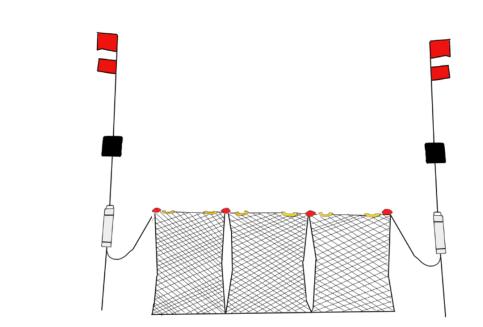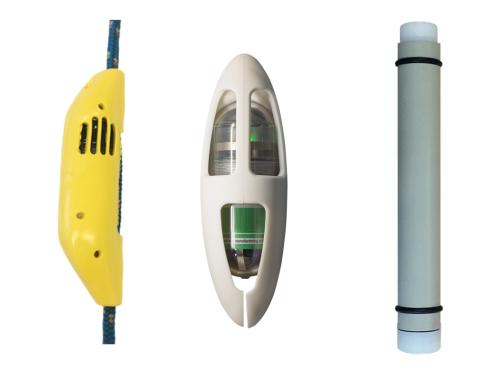Material & Methods
Experimental set-up

Data collection ran from September 2018 to January 2020. Four fishermen situated along the west coast of Sweden participated in this project, and four areas in Kattegat were used for data collection.
Participating fishermen used their own bottom-set gillnets throughout the experiment. Gillnet lengths ranged from 370 m to 800 m and were set for cod (Gadus morhua) during the autumn fishing season and for lumpfish (Cyclopterus lumpus) in the spring season. Participating fishermen were provided with pingers and C-PODs and were responsible for securely deploying them in conjunction with setting the gillnets. The C-POD is an autonomous odontocete click train logger that can log continuously for a period of 4-5 months. The C-POD analysis system includes a species classification algorithm (KERNO) which makes it possible to extract harbour porpoise click trains with a source quality measure. Detection Positive Minutes per hour (“DPM/h”), which is the number of minutes with at least one porpoise click train per hour, were exported from the processed C-POD data. This measure was used as a proxy for porpoise presence.
Video footage analysis
Catch yield and any harbour porpoise bycatch was recorded by the fishermen in catch logbooks provided by us, together with net set and haul dates. Video recording systems were installed on each vessel of the participating fishermen. To investigate the plausibility of using these video footages to verify the fishermen’s logbooks, bycatch of birds and seals were included in the video analysis. A fully video documented net haul was called one fishing instance. Fishing instances were scored for their video quality, “good” if the overall video footage was good enough to be analysed, with minor disturbances such as short duration sun-glares and shades allowed, and “bad” if such disturbances made the video analysis nonreliable. Examples of “bad” fishing instances include footage where the camera did not show the hauled net, footage where glares and shades were present throughout the video and footage with poor light conditions.
Pinger efficiency
To investigate the efficiency of the two pinger types in reducing harbour porpoise bycatch, gillnets were provided with either the adjusted SSB pingers, FO pingers or no pingers. The SSB pinger was chosen as candidate for further study since it emits several different 300 ms frequency-modulated, multi-harmonic signals at semi-random intervals of 4-15 s, thus reducing the possibility of harbour porpoises habituating to the pinger sounds. The manufacturer was asked by us to adjust the lower frequency cut-off to 60 kHz to make the sounds less audible to seals compared to the standard SSB pinger, where the lower frequency cut-off is 5-7 kHz lower. The FO pinger generates 64-66 kHz 300 ms tones and with fixed ping intervals of 4 s. 60-66 kHz might be detectable by the seals but only at rather short distances. Hence it is unlikely that they can have any “dinner bell” effect.

Responsible for this page:
Director of undergraduate studies Biology
Last updated:
05/30/20
